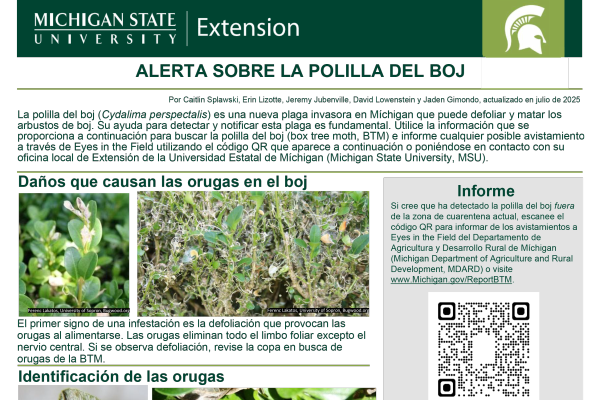You Might Also Be Interested In
-
New box tree moth alert for Michigan homeowners and residents, now available in English and Spanish
Published on October 10, 2025
-
What’s wrong with my boxwood? Boxwood pests and other threats
Published on September 18, 2025
-
New box tree moth alert for Michigan homeowners and residents
Published on August 25, 2025
-
Alerta Sobre La Polilla Del Boj
Published on July 31, 2025
-
Box Tree Moth Alert
Published on July 31, 2025
-
Fighting Invasive Species in Metro Detroit
Published on June 24, 2025
-
Safeguard against spreading the invasive box tree moth
Published on June 23, 2025
-
Box tree moth quarantine covers 13 southern Michigan counties
Published on May 15, 2025










 Print
Print Email
Email